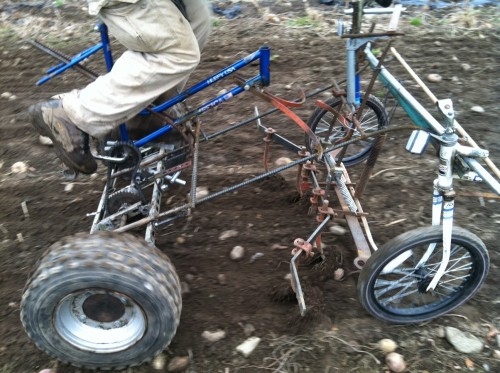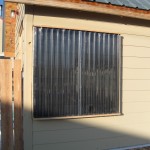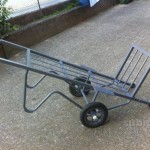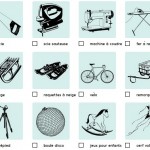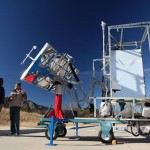“The Culticycle is a pedal powered tractor that can cultivate, seed, spray, or pull gear for most low horsepower tasks. Small tractors do many jobs very well and very fast, but also consume fuel, compact soil, cost a lot, and cause physical damage to the operator -– mainly spine and joint problems. Many of their jobs could be done, slower but better, by human pedal power.
This prototype consists of:
- the front ends of 2 bikes welded together at 42” on center;
- a lawn tractor differential mounted in a unistrut rectangle for a rear end , with 3/4″ round axles and 20” ATV tires;
- a bike frame welded above the rear end with motorcycle sprocket and chain driving the differential (a springloaded idler tensions the chain);
- a belly mount lift to hold cultivators, seeders, etc.;
- a bike handlebar, separate from the bike frame and joined to the front end, steering the front wheels.
The materials are rebar, unistrut, landscape rake tines, and parts from bikes, an ATV, and a lawn tractor. It attempts to show that human pedal power can do some jobs of small tractors, albeit in twice the time, and that the design can be simple enough that no extra weight is needed for traction. The effort required is similar to climbing a 10 degree slope on a seventies Schwinn 3 speed. This prototype was built for testing: a more easily buildable version is in the works.”
Found at Farmhack. This is begging for an open modular approach. Thanks to Tim Cooke.
Read more: Slow Farming Tools.
